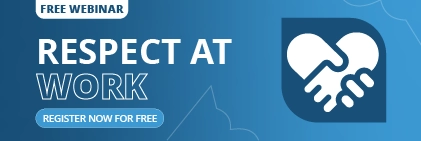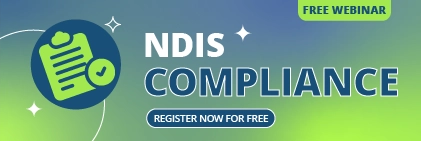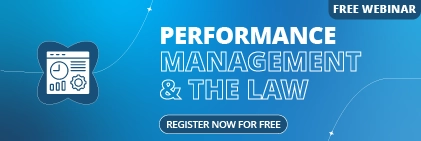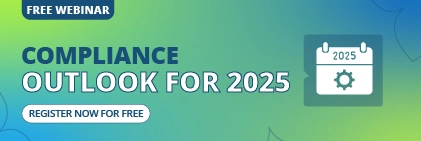Running a business in Australia is like navigating an ocean of opportunities, but storms like regulatory changes, cyber threats, and workplace safety issues are always looming. A solid risk management system (RMS) is your lifeboat, helping you identify trouble early, stay compliant, and keep operations running smoothly. I’ve been in the trenches with businesses, big and small, and I know how overwhelming it can feel to choose the right tool. So, I’ve dug into the details, scouring websites, user reviews, and industry insights to bring you a human take on the top 10 RMS solutions for Australian businesses in 2025. These aren’t just software names; they’re lifelines for staying ahead of the chaos.
Whether you’re a small café worried about workplace safety or a corporate giant juggling complex compliance, each system has its features. Let’s break them down with real talk about what they offer, how they connect, and who they’re best for.
1. Sentrient Risk Management System
Ever feel like managing workplace compliance is a full-time job in itself? That’s where Sentrient’s Risk Management System comes in. It’s an expert-built, all-in-one software designed to help you handle all those tricky compliance tasks, strengthen your company’s governance, and confidently manage potential risks. Built specifically for Australian businesses, it gives you a solid way to identify, evaluate, and reduce risks before they become real problems. Think of it as your safety net for compliance, GRC, and HR.
Key Features:
What makes it so effective? Well, it’s packed with valuable features that make your life easier:
- Identify and log risks easily. You can quickly identify and record any potential dangers you find.
- Know who’s responsible. Assign specific people to manage and fix risks, so there’s no confusion.
- See everything in real time. The dashboards and reports give you an instant look at your risks and what’s being done about them.
- Get intelligent alerts. It uses Key Risk Indicators (KRIs) to alert you when something’s brewing, and you can even set your thresholds.
- Every step is recorded. The system keeps a complete history of all your risk-busting efforts, perfect for audits and transparency.
- Manage mitigation like a pro. It provides all the tools you need to track and manage your risk-reducing activities.
- Connect the dots. Link incidents, hazards, and controls to get a complete picture of your company’s risk landscape.
- Make it your own. Customise risk categories to track the threats that matter most to your business.
How It Connects: The Sentrient Risk Management System isn’t a standalone tool; it’s part of a larger family of products. It works seamlessly with other Sentrient modules for managing incidents, privacy, vendors, audits, policies, and more, making it an excellent solution for overall GRC (Governance, Risk, and Compliance) management.
Pros and Cons:
Pros:
- A single, powerful solution. It brings all your risk management needs under one roof, from finding risks to reporting on them.
- It does the heavy lifting for you. Automating tasks like documentation and reporting frees up your time.
- Stay in the know. The real-time insights mean you can make smart, data-driven decisions.
- Always audit-ready. The detailed history and trails mean you’re prepared for any compliance check.
- Made for Australia. It’s a perfect fit for businesses with data stored locally and a focus on Australian laws.
Cons:
The content doesn’t mention any specific drawbacks, so it’s hard to say what the potential downsides might be.
Who’s It For?
This system is ideal for any Australian business, big or small, that needs a straightforward, all-in-one way to handle workplace compliance and risk. If you want to simplify your processes and sleep better at night, you might need this.
Price Tag: Pricing information isn’t available on the site, so you’ll likely need to contact Sentrient directly for a quote.
2. Sectara Risk Management System
Sectara’s like a laser-focused security guard for your business risks. Born from consultants fed up with clunky spreadsheets, it’s about making security threat assessments sharp and professional. It’s cloud-based, secure, and loves sticking to standards like ISO 31000.
Key Features:
- Real-time risk tracking with handy templates and risk libraries.
- Locked-down hosting in Sydney’s AWS, with encryption you can trust.
- Slick charts and visuals to make your risk reports pop.
- White label your reports for that extra polish.
- Five user roles for tight control over who sees what.
How It Connects: It’s more about internal magic, like auto-linking risks and controls. It plays well with Word and Excel for exports, but doesn’t advertise big third-party hookups.
Pros and Cons:
Pros:
- Built for precision, perfect for security-focused folks.
- Easy to use, saving you hours on assessments.
- Top-notch security with local hosting.
- Scalable for tiny startups or massive corporations.
Cons:
- Security is its jam, so it might not cover all GRC needs.
- No clear word on integrations with tools like SAP or HR systems.
- Top-tier pricing requires a call, which can feel like a hurdle.
Who’s It For?
Perfect for businesses obsessed with security risks, such as government, mining, or healthcare. If you’re a consultant or security manager needing clean, auditable reports, Sectara is your go-to.
Price Tag: Starts at $100/month for solo users, up to $2,000/month for bigger teams. Platinum plan? You’ll need to chat with them. A 14-day free trial lets you test the waters.
3. EcoOnline Risk Management System
EcoOnline’s like the safety coach who’s always on the field with your team. It’s built to identify and squash real-time risks, especially for industries with heavy safety needs. Its mobile-first vibe and AI smarts stand out for keeping workers safe and compliant.
Key Features:
- Central hub for risk assessments, with tasks and reminders.
- Dashboards with graphs and a risk severity matrix you can tweak.
- Mobile app with QR codes for instant field reports, photos, or videos.
- AI that identifies hazards, builds quizzes, and predicts risks.
- Chemical safety tools, like Safety Data Sheet management.
How It Connects: It’s got automated data flows through platforms like AWS, Salesforce, and Datadog, but it’s vague on specific ERP or HR connections. You might need to dig deeper with their team.
Pros and Cons:
Pros:
- Super intuitive, with quick onboarding for all staff.
- Mobile app shines for workers on the move.
- AI and analytics give you a crystal ball for risks.
- Unlimited pricing for users, no cost surprises as you grow.
Cons:
- Integration details are fuzzy; you’ll need to confirm with them.
- So many features might feel overwhelming to set up.
Who’s It For?
Great for businesses with many sites or frontline workers, like manufacturing or construction. If chemical safety or mobile reporting is your thing, EcoOnline’s a winner.
Price Tag: Custom pricing based on your needs; they promise it’s scalable with unlimited users. Book a demo to get the full scoop. They claim a $2-6 return for every dollar spent on safety.
4. Skytrust Risk Management System
Skytrust is like a Swiss Army knife for compliance, blending safety, quality, and environmental management into one cloud-based app. With a mobile app for on-the-go risk checks, it’s designed to keep your team safe and your business out of legal trouble.
Key Features:
- Custom risk matrix and a shared risk list for your team.
- Visuals to show how controls cut down risks.
- Mobile app for field reporting, plus real-time dashboards.
- Covers ISO 9001, 14001, and 45001 for a one-stop compliance shop.
- Sets up in just 48 hours.
How It Connects: It focuses on ISO standards integration but is quiet on external tools like HR or ERP systems. It’s more about keeping everything tidy and in one place.
Pros and Cons:
Pros:
- Cloud and mobile access from anywhere.
- Ties multiple ISO standards together seamlessly.
- Clear pricing with no lock-in and a 3-month free trial.
- Local support and fast setup.
Cons:
- Mobile app gets mixed reviews; some love it, others find it clunky offline.
- Not much detail on third-party integrations.
- UI could use a refresh, based on some feedback.
Who’s It For?
Ideal for businesses chasing ISO certifications, especially in construction. If you want flexible pricing and quick setup, Skytrust’s a solid bet.
Price Tag: From $199/month (1-20 users) to $2,500/month (1001-5000 users), plus one-time setup fees ($499-$10,000). There is a free 3-month trial with no strings attached.
5. MiSAFE Risk Management System
MiSAFE is like a custom-built suit for your risk management needs. It ditches spreadsheets for a tailored system that fits your business like a glove. They start with a gap analysis to pinpoint your need, then build it to match your budget and goals.
Key Features:
- Fully customisable workflows, reports, and notifications.
- Offline mobile apps for field workers in remote spots.
- Scales from simple risk checks to full-blown enterprise setups.
- Deep compliance with Australian WHS, Privacy Laws, and IRAP.
- Hands-on support, from system design to staff training.
How It Connects: It’s all about internal data unity, pulling everything into one hub. There is no word on specific third-party integrations, so you’ll need to ask about ERP or HR links.
Pros and Cons:
Pros:
- Tailor-made to fit your exact needs.
- Offline mobile reporting is a lifesaver for remote teams.
- Covers Australian and global compliance.
- Top-notch support, like having a consultant on speed dial.
Cons:
- Custom pricing means you’ll need to chat for clarity.
- No clear third-party integrations listed.
- Bespoke solutions might cost more upfront.
Who’s It For?
It is perfect for businesses stuck with outdated methods that need a custom fix from basic to enterprise level. It is also great for those who value expert guidance and Australian compliance.
Price Tag: Small Business Pack starts at $700/month + $500 setup (ex-GST). Free gap analysis: tailored pricing requires a call.
6. Pinnacle Risk Management System
Pinnacle’s RMS is the glue that holds your risk strategy together, tying risks to departments and assets. It’s part of a broader enterprise system, making it a go-to for businesses that need to see the financial side of risks.
Key Features:
- Real-time dashboards to track risks and key indicators.
- Easy-to-use interface with customisable fields.
- Central risk register linking controls and treatment plans.
- Detailed reports with document attachments.
- Tracks risk progress from “uh-oh” to “handled.”
How It Connects: Shines with integrations to ERPs like MYOB, Xero, SAP, and Business Central. Custom integrations are also on the table, which is a big win for data flow.
Pros and Cons:
Pros:
- Covers the whole risk lifecycle, from identifying to solving.
- Strong ERP links for financial insights.
- Customisable and intuitive for quick adoption.
- Australian-based with solid support.
Cons:
- Pricing’s a mystery you’ll need to call.
- Reviews focus more on asset management than risk.
- Some say the UI feels a bit dated.
Who’s It For?
Best for businesses needing financial risk visibility, like aged care, manufacturing, or government. If you’re heavy on assets, Pinnacle’s a strong pick.
Price Tag: No details were provided; you must reach out. No trial was mentioned.
7. Riskware
Riskware’s like a command centre for risk, safety, and compliance. With over 3 million users, it swaps out messy, disconnected systems for one AI-powered platform that makes life less risky. It’s Australian-owned and built for big players.
Key Features:
- Over 80 modules covering risk, safety, audits, and more.
- AI Copilot will automate tedious tasks like risk assessments.
- No-code customisation with drag-and-drop ease.
- Real-time dashboards, bowtie analysis, and KRIs.
- Ironclad security with regular testing.
How It Connects: It links to regulatory feeds like LexisNexis for compliance updates. Its no-code setup hints at flexible data connections, but specific integrations aren’t mentioned.
Pros and Cons:
Pros:
- All-in-one for risk, safety, and compliance.
- AI speeds up the boring stuff.
- Easy to tweak without tech skills.
- Trusted by millions with strong security.
Cons:
- Pricing’s hidden; you’ll need to ask.
- So many modules might overwhelm smaller teams.
- No free trial to test it out.
Who’s It For?
Big organisations that need a single hub for risk and safety, like risk managers or CISOs. Perfect for replacing scattered systems with one powerhouse.
Price Tag: Available on request, based on features and users. No free trial.
8. Protecht Enterprise Risk Management System
Protecht’s your all-seeing eye for risks, from compliance to IT. It’s a unified platform that pulls everything into clear dashboards, helping you make smart calls fast. It’s got street cred from Gartner and Chartis, so you know it’s legit.
Key Features:
- No-code forms, alerts, and risk scales you can shape.
- Prebuilt templates and real-time risk tracking.
- Links risks, controls, and incidents for a complete picture.
- Fancy visuals like bowtie tools and custom reports.
- Manages conflicts of interest and feedback.
How It Connects:
A rockstar here integrates via iPaaS, APIs, SSO (Okta), and more. Hooks up with Teams, Jira, SAP, ServiceNow, Power BI, and others for a true GRC ecosystem.
Pros and Cons:
Pros:
- Super flexible and easy to use.
- Connects to tons of business tools.
- Scales from startups to giants.
- Stellar support and industry recognition.
Cons:
- Starts at a steep $45,000/year.
- Extra fees for templates or modules.
- Advanced features might need some tech know-how.
- No free trial.
Who’s It For?
From banks to healthcare, it’s for anyone needing a scalable, connected risk system. Think risk managers or auditors in complex industries.
Price Tag: $45,000/year base, plus per-user fees and module extras. No trial.
9. Beakon Risk Management
Beakon’s like a bridge connecting your risks, safety, and compliance. It’s intuitive and ties everything together, so you’re not stuck piecing together puzzles. It’s built for demanding industries where risks hit hard.
Key Features:
- Custom risk register with automated workflows.
- Control frameworks and treatment plans aligned with ISO 31000.
- Power BI dashboards, heat maps, and bowtie visuals.
- Links risks to incidents, audits, and goals.
- Safety tools like training and incident reporting.
How It Connects: It integrates with Power BI for analytics and has strong internal links across modules. External integrations aren’t detailed, so you’ll need to check.
Pros and Cons:
Pros:
- Full risk management with ISO alignment.
- Great visuals and 24/7 support.
- All modules are included in the pricing.
- Proven in high-risk fields like mining.
Cons:
- No clear external integrations.
- Pricing’s not public.
- Feature-heavy, so it might take time to master.
Who’s It For?
High-risk industries like oil, gas, or food processing need a unified risk and safety system with top-notch reporting.
Price Tag: Not listed; includes all modules. Contact Beakon for a quote.
10. Arventa Risk Management System
Arventa is like a toolbox with specialised kits: WHS Monitor, Quadrum One, MSDS.com.au, and Store Manifest. It’s big on workplace safety and chemical management, serving 2,500+ Australian companies with cloud-based precision.
Key Features:
- Mobile apps with NFC/QR for instant safety data.
- WHS Monitor auto-builds safety plans; Quadrum One has 140+ modules.
- Huge database with 7M+ safety records.
- Chemical tools for handling/storage compliance.
- Secure, PROTECTED-level hosting with offline access.
How It Connects: Strong internal module integration for seamless data. No word on external systems like ERP or HR, but the modular design is flexible.
Pros and Cons:
Pros:
- Deep WHS and chemical expertise for Australia.
- Scalable and customisable for any industry.
- Mobile/offline access for field work.
- Trusted by thousands of big organisations.
Cons:
- Pricing varies; only WHS Monitor’s clear ($500/year).
- Limited external integration details.
- Product info feels scattered.
Who’s It For?
Large firms or those in warehousing/chemicals who need tailored WHS solutions. Quadrum, one suits enterprise GRC needs.
Price Tag: WHS Monitor starts at $500/year; others require a quote for scalable pricing.
Wrapping It Up
Picking an RMS is like choosing the right gear for a hike; it’s got to fit your terrain. These 10 systems offer something for every Australian business, whether you’re dodging compliance fines or keeping workers safe. My advice? Don’t just read about them; book a demo or trial to see how they fit. A good RMS isn’t just software; it’s peace of mind in a risky world.
FAQs
1. What’s a risk management system anyway?
It’s a tool for identifying, assessing, and handling risks, such as safety hazards, cyber-attacks, or legal issues. It keeps everything in one place so you’re not scrambling when trouble hits.
2. How do I pick the right one for my business?
Match it to your needs, including compliance, size, budget, and existing tools. Test it with a demo or trial to see if it resonates with your team.
3. Are these built for Australian rules?
Most are covering WHS Acts, Privacy Laws, or APRA CPS 230. Double-check for your industry’s specific needs.
4. Can my team use it on phones?
Many like EcoOnline and MiSAFE have mobile apps; some even work offline for remote sites.
5. Will it work with my current software?
Protecht and Pinnacle lead with ERP/HR connections. Others focus inward, so ask vendors about specific integrations.
Recommendations
For small to medium businesses looking to nail compliance without a big budget, the Sentrient Risk Management System is a no-brainer. It’s affordable, easy to use, and laser-focused on Australian workplace rules, plus it weaves in HR tools like performance reviews. If you need more muscle, check out EcoOnline for mobile safety and AI smarts, Protecht for enterprise-grade connections, or Riskware for a do-it-all GRC platform. Whatever you choose, talk to the vendor, test the system, and ensure it grows with you. Risk isn’t going away; your tools shouldn’t either.
Read More About Risk Management:
- 9 Steps to Develop an Effective Risk Management Strategy: Key Steps and Best Practices
- 9 Key Components of an Effective Enterprise Risk Management Framework
- Implementing Risk Management Software: 5 Essential Steps in a Step-by-Step Guide
- Top 10 Questions to Ask Before Choosing Risk Management Software
- How Can a Risk Management System Improve Compliance and Security





